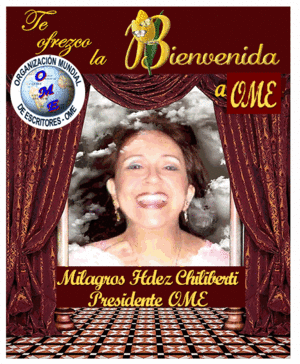- PORTADA
- PÁGINA PERSONAL
- MIEMBROS
- BLOGS
- FORO
- FOTOS
- VIDEOS
- GRUPOS
- LOSmásPOPULARES
- SONETOS
- JUEVES DE MUSA Y CANTO
- LITERATURA INFANTIL
- ERÓTICOS
- DUETOS Y MÁS
- CUMPLEAÑOS
- ARTES PLÁSTICAS
- ANTIPOEMAS
- CINE DE SIEMPRE
- POR LA PAZ
- ACRÓSTICOS Y CALIGRAMAS
- ANTOLOGÍA DE LA IMAGEN
- INTERCAMBIOS
- UNIVERSO HAIKU
- CARTAS DE AMOR
- FIESTA DEL AMOR
- LETRAS PARA MAMÁ
- LOS NIÑOS BENDITOS
- HOMENAJE AL POETA
- POESÍA A MADRE-TIERRA
- A LA MUJER
- POESÍA PARA TODOS
- TRADICIONES
- MITOS Y LEYENDAS
- CUENTOS NAVIDEÑOS
- CONCIENCIA SOCIAL
- TEATRO
- CIENCIA FICCIÓN
- EL PODER DE LA METÁFORA
- TANGOS Y MILONGAS
- MICROCUENTOS
- CHISTES Y CHIRIGOTAS
- ANTROPOLOGÍA-CIENCIA
- VENEZUELA
- EVENTOS
- BANCO DE IMÁGENES
- CHAT
- HAZ tu DONATIVO
Sergiovanni instructional leadership pdf
SERGIOVANNI INSTRUCTIONAL LEADERSHIP PDF >> Read Online SERGIOVANNI INSTRUCTIONAL LEADERSHIP PDF
Sergiovanni, Burlingame, Coombs and Thurston (1980) firstly defined administration as the process of working with and through others in order to accomplish organisational goals Educational leadership was seen to have at its core the responsibility for policy formulation and (where appropriate), organisational transformation; 3. Educational Sergiovanni's (2009) Five Forces of Leadership (with associated Leadership Roles, namely Educational, Technical, Human, Symbolic, and Cultural) and Gardner's (2007) Five Minds for the Future (i.e. Ethical, Respectful, Creating, Synthesizing, and Disciplined) are integrated into an innovative 5R5M (Five Roles and Five Minds) framework of Leadership and Excellence in Schooling. Thomas J. Sergiovanni Published 1984 Psychology Educational Leadership No Paper Link Available Save to Library Create Alert Loose and tight coupling in educational organizations : an integrative literature review Tanja Hautala, Jaakko Helander, V. Korhonen Sociology 2017 Sergiovanni (2007) stated that instructional leadership functions in schools as instructional resource, resource provider, communicator, visible presence, and curriculum implementer. Pratley (1992) stated that an instructional leader recognizes the present culture of school before bringing reform in it. 118 Cuban, L. (1984). Transforming the frog prince: Effective schools research, policy, and practice at the district level. Harvard Educational Review , 54 , 129-151. Sergiovanni, whose concept of "community" encompasses most of the dimensions of climate, identifies relationships as the linchpin. In a true school community, relationships are based on shared values rather than bureaucratic roles, resulting in "individuals who care, listen, understand, respect others and are honest, open and sensitive." SuperVision and Instructional Leadership: A Developmental Approach, 10th Edition (Glickman et al., 2017), Supervision: A Redefinition, 9th Edition (Sergiovanni & Starratt, 2014), Effective Supervision: Supporting the Art & Science of Teaching (Marzano et al., 2011), and . Supervision That Improves Teaching and Learning: Strategies and Techniques These leadership theories - Instructional Leadership and Leadership for Learning - have assisted our recent understanding of school leadership. This book interrogates the theories themselves as well as their impact on education systems around the world. It also looks at how they can be practically applied to educate school leaders within In other words, the constancy of motivation to perform relies on the flexibility that is derived from reflection in and on action to provide or introduce direction. Sergiovanni identifies hope, trust, civility and piety as core values of leadership practice. The Virtue of Hope. When faced with the obvious, leaders are inclined to use hope to Sergiovanni, Thomas J. Educational Leadership, v39 n5 p330-36 Feb 1982. Based on the theory that leadership skills receive too much attention and leadership goals and ideals too little, this article outlines the "10-P" model of leadership: prerequisites (leadership skills); perspectives, principles, platform, and politics (leadership When the concept of instructional leadership emerged in the early 1980s, the rules changed for school administrators. Long judged by their ability to manage school Sergiovanni (1994) argues that schools should be "purposeful communities," in which f
Contenido principal
Grupos
Videos
-
22 de mayo de 2024
Agregado por Nilo 0 Comentarios 1 Me gusta
-
24 de mayo de 2024
Agregado por Nilo 0 Comentarios 1 Me gusta
© 2025 Creada por Aimee Granado Oreña-Creadora.
Con tecnología de
![]()
Insignias | Informar un problema | Política de privacidad | Términos de servicio

¡Tienes que ser miembro de ORGANIZACION MUNDIAL DE ESCRITORES. OME para agregar comentarios!
Únete a ORGANIZACION MUNDIAL DE ESCRITORES. OME